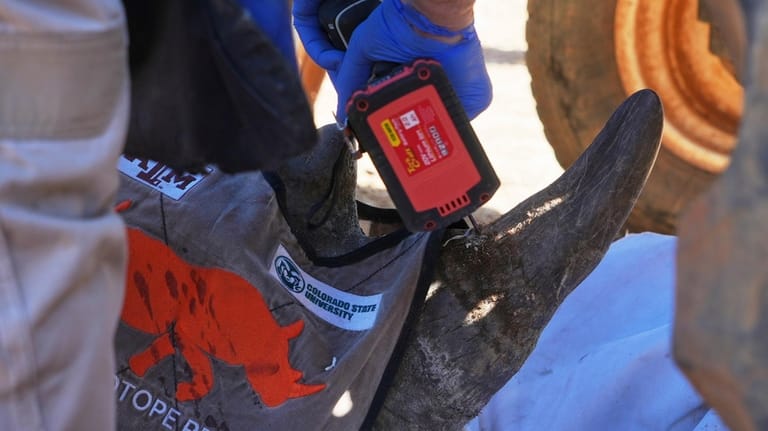In a groundbreaking stride for wildlife protection, South African scientists have unveiled a revolutionary anti-poaching strategy: injecting rhino horns with harmless radioactive isotopes. This innovative approach, part of the “Rhisotope Project,” marks a significant shift in the battle against the illicit wildlife trade, offering a new deterrent that leverages nuclear science for conservation efforts.
The project, a collaborative effort involving the University of the Witwatersrand, nuclear energy officials, and dedicated conservationists, represents a calculated move to secure the future of the nation’s dwindling rhino population. Following successful trials, the initiative aims for a mass injection program, building on preliminary studies where around 20 rhinos were safely treated last year, proving the viability of this cutting-edge method.
The core principle behind this technology is simple yet ingenious: even minute levels of the radioactive isotopes can be detected by radiation scanners deployed at international airports and border crossings. This inherent traceability transforms rhino horns into high-risk contraband, making their illegal transport virtually impossible and significantly increasing the likelihood of apprehending poachers and traffickers.
Extensive tests conducted by researchers at Witwatersrand’s Radiation and Health Physics Unit have unequivocally confirmed the safety of the radioactive material for the rhinos. The meticulous pilot study ensured that the procedure poses no harm to the animals, prioritizing their well-being while maximizing the effectiveness of the anti-poaching measures, a crucial aspect for ethical wildlife conservation.
Dr. James Larkin, chief scientific officer at the Rhisotope Project, confidently stated, “We have demonstrated, beyond scientific doubt, that the process is completely safe for the animal and effective in making the horn detectable through international customs nuclear security systems.” He further elaborated that even a single horn with significantly lower levels of radioactivity than anticipated for practical use successfully triggered alarms in radiation detectors, underscoring the system’s sensitivity and reliability.
The urgency for such radical interventions is stark, with global rhino populations having plummeted from an estimated 500,000 at the turn of the 20th century to merely 27,000 today. This drastic decline is primarily fueled by persistent demand for rhino horns in the black market, highlighting the severe biodiversity crime problem that threatens these iconic species with extinction.
South Africa, home to the largest rhino population with approximately 16,000 individuals, bears the brunt of this crisis, experiencing alarmingly high rates of poaching. With around 500 rhinos killed annually for their horns, the country’s commitment to implementing advanced anti-poaching solutions like the Rhisotope Project is a critical step towards safeguarding its natural heritage and stemming the tide of illegal wildlife trade.
This bold application of nuclear science for rhino conservation offers a beacon of hope in a long and arduous fight. By making illegal trade inherently risky and traceable, this initiative could fundamentally disrupt the poaching supply chain, thereby protecting endangered rhinos and fostering a future where these magnificent creatures can thrive without constant threat.






Leave a Reply